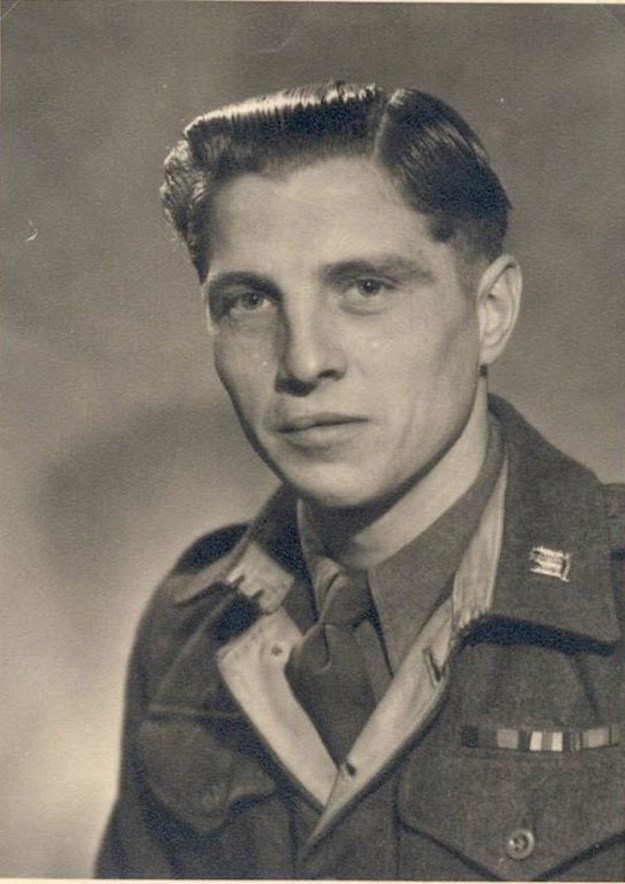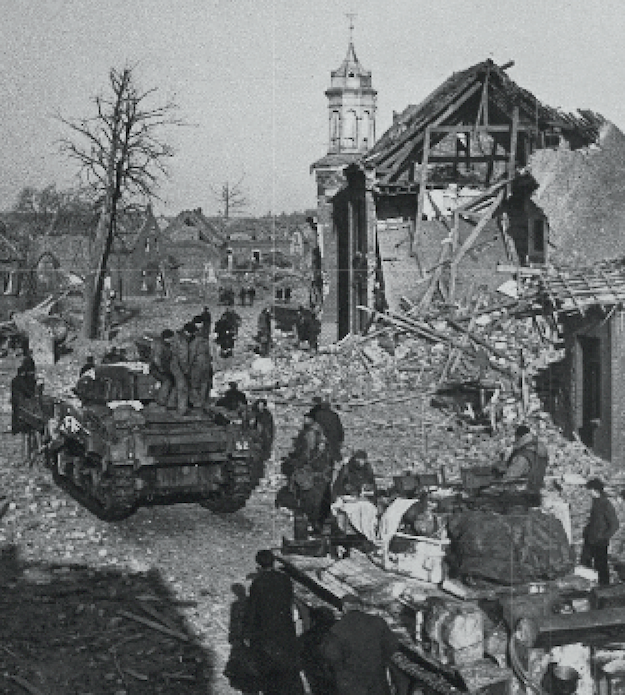- Linnerweg, Montfort, Netherlands
In the middle of January 1945, the fight for liberation broke out in the Rur region. After a sequence of ferocious battles, the German troops took up positions in Montfort. This led to allied attacks day in, day out, with terrified civilians and evacuees forced to hide en masse in their cellars for days on end. Eventually, the British Cromwell tanks arrived…
Operation ‘Blackcock’ started on 16th January 1945 with the aim of clearing the area between the Maas and Roer rivers, along the Maaseik – Sittard – Linnich – Roermond line, of enemy troops.
During the first phase of the attack, under the codename ‘Angel’, the 5th Royal Inniskilling Dragoon Guards made excellent progress until they reached the village of St. Joost. This was where the paratroopers of the 24th Fallschirmjäger Regiment Hübner had come to the aid of the exhausted soldiers of the 176th Infantry Division in their battle against the British. Heavy fighting ensued, and when the Germans realised they could no longer defend their position, they retreated to Montfort.
The battle to capture the villages of Linne and Montfort was codenamed ‘Dolphin’. The Fallschirmjäger regarded themselves as elite soldiers and had been given strict orders to defend Montfort at all cost. Over the next 24 hours, the British soldiers, the local population and dozens of evacuees bore the brunt of their fanaticism.
When the British approached the village in their Cromwell tanks on 22nd January 1945 at 5 o’clock in the afternoon, Montfort was covered in snow. It was cold and freezing, and it had already started to get dark. The first two tanks slid cautiously towards the ‘Aandenberg’ crossroads. Then the Germans opened fire from their well-protected positions, and all hell broke loose. Before they knew it, the first of the tanks commanded by troop leader de Grey, had been hit by a German Pantzerfaust and engulfed in flames.
Faces of Margraten
8,301 American soldiers have been buried in this cemetery; another 1,722 names are listed on the Walls of the Missing. We do know the names of all these men and women, but who were they? Where did they come from and what did their lives look like prior to World War II? The Stichting Verenigde Adoptanten Amerikaanse Oorlogsgraven (Foundation United Adopters American War Graves) hopes to make a unique tribute to the men and women buried there by trying to give as many names of the soldiers buried in or memorialized at the Margraten Cemetery as possible a face, by decorating their graves or names on the Walls of the Missing with a personal photo through the project “The Faces of Margraten” during a Memorial week once every two years. The next tribute is scheduled to take place in 2020. To see The Faces of Margraten 2018 click here.
Tourist information
Audio spot located at the roundabout near the Linnerweg in Montfort.


